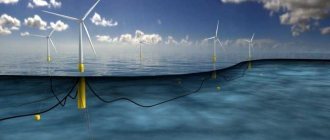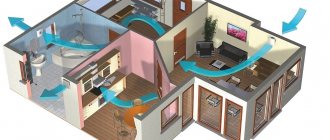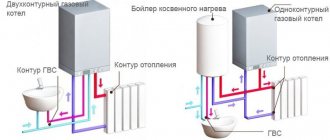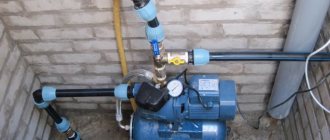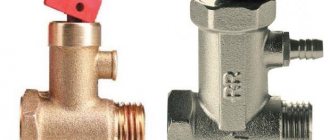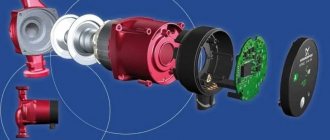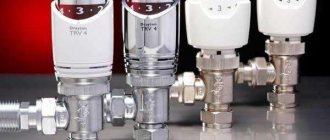| Place | Name | Characteristics in the rating |
| The quietest diesel generators |
| 1 | Fubag DS 3600 | Best price for a diesel unit |
| 2 | Pramac P 4500 | The most reliable generator. Low volume operation |
| 3 | Geko 7801 E-AA/ZEDA | Diesel generator for domestic use |
| 4 | ENERGO ED 8/230 H | Powerful, high quality device |
| 5 | TCC SDG-7000 EH3 | Three-phase generator 380 volts |
| The quietest gasoline generators |
| 1 | Honda EU10i | The best low noise gas generator. The quietest |
| 2 | Fubag TI 800 | Long battery life |
| 3 | Huter HT950A | Most popular manufacturer |
| 4 | PATRIOT GP 1000i | The best ratio of price and quality |
| 5 | ELITECH BIG 1000R | Large fuel tank capacity |
The quietest diesel generators
A diesel generator is rarely used for domestic purposes. Among them there are no compact installations that produce only a kilowatt. As a rule, these are powerful machines, where the minimum threshold is 3 kW. At the very least, two. A diesel engine is considered more economical, practical and durable. All other characteristics being equal, it is capable of delivering much more energy compared to its gasoline counterpart. But its sound level will be higher. The lowest noise models have a value in the region of 70-80 units. Well, a silent generator is still fantastic.
Operating principle of an electric generator
The operation of units that convert energy is based on Faraday's law of electromotive force (EMF). The scientist discovered a law that explained the nature of the appearance of current in a metal circuit (frame) rotating in a uniform magnetic field (the phenomenon of induction). Current also occurs when permanent magnets rotate around a metal circuit.
The simplest generator circuit is represented in the form of a rotating metal frame between two opposite-polar magnets. Slip rings are placed on the axis of the frame, which receive a charge of electric current and transmit it further along the conductors.
In reality, the stator (the stationary part of the device) consists of electromagnets, and the rotor is a group of frame conductors. The device is a reverse electric motor. The electric motor absorbs the electric current and causes the rotor to rotate. An electric generator that converts the kinematic energy of mechanical rotation into EMF is called an induction generator.
The quietest gasoline generators
In most cases, a gas generator operates quieter than its diesel counterpart, but even here the noise level does not fall below 55 dB. And then, only inverter installations, which are initially quieter, have this indicator. The inverter housing contributes to this. Completely closed, it partially conceals the sounds produced, although the exhaust noise cannot be removed anywhere, and it is this that is the main source of sound. In our rating we will consider devices with a power of up to 3 kW, but the quietest ones have a value of 1 kW and lower.
Power phases
Historically, there has been a shift from direct current to variable current to power all consumer electronics. This type of generation reduces the associated costs of the initial cost of the fuel used in the generator, and the range of voltage transmission without losses. For alternating currents it is greater than for direct currents.
In any generator there are three voltage phases. Each of them, in terms of repetition frequency, is rotated, as it were, 120 degrees relative to the others. Naturally, the voltage between zero and each phase is 220 V. But between the two supply contacts it will be as much as 380 V.
Why do we need three phases at all? For connecting more powerful loads, up to industrial equipment. In the case of using one, connecting powers of more than 10 kW is impractical. This is directly related to the required thickness of the phase line. For 15 kW it should be 10 mm in diameter, and consist of pure copper. The exorbitant cost of such a conductor can be estimated based on its required length. As for three-phase power, it is limited only by the peak power of the generator. The only thing that guides the installation of such circuits is the distribution of the load in approximately equal parts to each of the phases. In reality, for a private household it looks like this: heating is installed on one phase, light throughout the entire home and heating elements that provide hot water are installed on the second, sockets and kitchen equipment are installed on the third.
Consumption calculation
The answer to the question of how to choose a generator directly depends on the characteristics of the device and the specific power requirements of its consumers. As for the latter, peak demands of the energy network are taken for calculation. Or, to put it another way, it is the sum of the watts of all lamps, refrigerators, stoves, water heaters, heating systems, and other frequently used electrical appliances. Let's write an example for a small house with two rooms, an entrance hall, a kitchen and a bathroom. Let's not forget electric heating, heating elements, washing machines, street lighting, water supply pumps and a basement. The calculation will be carried out in the context of energy-efficient lamps, as the cheapest lighting sources. In addition, in the table below, the number of watts is indicated in the volume expended per hour of operation. So:
| electrical appliance | Quantity | Power | Total power |
| Lamps | 8 | 25 W | 200 W |
| Fridge | 1 | 100 W | 100 W |
| TV | 1 | 100 W | 100 W |
| Stove | 1 | 2.5 kW | 2.5 kW |
| Computer | 1 | 160 W | 160 W |
| Laptop | 1 | 64 W | 64 W |
| Washing machine | 1 | 800 W, without water heating system. If a common heating element is used, then it is not needed. Otherwise, consumption can reach up to 2.9 kW | 2.9 kW |
| Water pumps | 1 | 1–2 kW for specialized - downhole, 250 W regular. | 2 kW |
| Microwave | 1 | 700 W | 700 W |
| Iron | 1 | 1000 W | 1000 W |
| Hot water heating element | 1 | 2 kW | 2 kW |
| Kettle | 1 | 1 kW | 1 kW |
| Electric heating | 1 | 4.5 kW | 4.5 kW |
| TOTAL | 17224 W or 17.2 kW. | ||
To supply energy to an average small house, in which absolutely all electrical appliances are turned on, the generator must produce a power of 17–18 kW/hour. Such current generation equipment, although it completely covers all the energy needs of the owner, is nevertheless very expensive. The price reaches up to a third of a million rubles.
How to save
There is a little trick here that can significantly reduce the initial cost of generation equipment. It consists of sharing an energy generation system with a capacious battery. The thing is that the calculated results relate to a one-time peak consumption, which almost never happens. Refrigerators, heating elements, irons, stoves, kettles work for a while, then turn off. At these moments, the generator for the home is free from load and can supply energy to other consumers. For example, a battery. Which, in turn, will start working and begin to release the accumulated charge at the moments of peak connection of devices to the electrical network.
Such a system will also save fuel. You can often notice that during periods of heavy load, the internal combustion engine located in the generator increases speed to compensate for the loss of power. Accordingly, fuel is consumed faster. The proposed system will smooth out surges due to the accumulated charge during idle periods, reducing wear and tear on equipment and reducing fuel consumption.
To calculate the required power in this case, the daily energy consumption of each device in the home power supply network will be used.
| electrical appliance | Quantity | Power (Watt) | Operating time per day (hours) | Total consumption per day (Watt) |
| Lamps | 8 | 25 | 16 | 3200 |
| Fridge | 1 | 100 | Turns on 4 times for 4 minutes every hour or 9.6 hours | 960 |
| TV | 1 | 100 | 8 | 800 |
| Stove | 1 | 2500 | 3 | 7500 |
| Computer | 1 | 160 | 24 | 3840 |
| Laptop | 1 | 64 | 24 | 1536 |
| Washing machine | 1 | 800 | 3 hours every three days | 720 |
| Water pumps | 1 | 1000 | 1 | 1 000 |
| Microwave | 1 | 700 | 30 minutes | 350 |
| Iron | 1 | 1000 | 0.3 per day or an hour every three days | 300 |
| Hot water heating element | 1 | 2000 | 1 | 2000 |
| Kettle | 1 | 1000 | 2 | 2000 |
| Electric heating | 1 | 4500 | 4 | 18000 |
| TOTAL FOR THE DAY: | 42206 | |||
The result would be terrible if we forget that we are talking about a full day. In an hourly sense, the required generator power would be (sufficient to recharge the battery and supply what is currently required) - 1758 W, or taking into account losses and possible urgent need - + 15-25% - 2200 Wh. Now, the acquisition of such a device already looks more like reality. On average, you can choose such a model for up to 15,000 rubles.
Of course, in the case of using a battery, the launch price includes the purchase of the battery itself, a current converter and a charge controller corresponding to the required power requirements. But as a result, the amount will be much less than when purchasing a full-format generator.
As for generators for dachas, their use in itself is economical. There is no need for additional systems, high power or long operating times. It is enough to take the simplest and smallest 220 V current generation device with a gasoline engine.
Installation and connection to the house
And finally, practical connection to the housing stock. First, the location of the generator is selected, taking into account the features of its design - on the street, in service buildings (barns, basements, outbuildings) or in the house itself. The location of the contact wires going to consumers depends on this. In the case of external dislocation, the cable from the generator is pulled from the location to the level of the transition of the house itself to the roof. And from there, the tires are lowered to the shield, from which the wiring goes to all consumers.
When the generator is located in the house, the wiring to the distribution box is installed indoors. In the latter case, it is imperative to provide ventilation for the service room and extend the outlet of the exhaust system of the device itself to the street. Failure to follow this rule can lead to a person losing consciousness when the engine is running due to carbon dioxide and carbon monoxide accumulated in the air, followed by death.
Connection diagram for three phase generator:
The ratings of the circuit breaker are selected depending on the planned load, 40–63 A is recommended. It is advisable to choose an RCD instead with the appropriate characteristics, which provides better protection.
Connecting a single-phase one is simpler in that there is no need to connect many wires. But you don’t need to forget about the thickness of the power line cable - it must correspond to the peak load, otherwise there is a chance of fire or melting of the current flow channel.
The machine, as in the previous case, must be selected according to its characteristics depending on the connected consumers.
Well, and finally, a circuit using an auxiliary battery connected to a gasoline generator, diesel or gas power generator.
The battery capacity is calculated according to the daily energy requirement. 12 or 24 V batteries are used. The characteristics of the inverter and controller must correspond to the reserve voltage used. In addition, the first of them must withstand the passage of currents of the power to which the entire system is generally oriented.
Important Features
The most common household generators use diesel fuel, gasoline and gas to power their power. There are also combined options. The main difference between them is the price of the resulting kilowatt and operating time, which directly depend on the fuel used. If we take as a basis a gasoline generator, which is initially cheaper than other types, then it spends on average 0.5 liters of fuel to generate every thousand watts. That is, judging by current prices, 1 kW will cost 20 rubles when using AI-80. With gas or combined, to generate a kilowatt, you will need a little more than 21 rubles. If the question is how to choose a diesel generator to reduce the cost of generation, then nothing will work out. The price of kW/h is within the same limits and amounts to 23 rubles.
The main difference in generators, besides the price and the phases produced, is the cooling system and the time of continuous operation. You should definitely pay attention to the last characteristic when purchasing it for your home energy supply system. Simpler ones have a limitation on the duration of continuous operation. At the end of the allotted time, such a generator must be turned off and allowed to cool. Slightly more expensive systems, equipped with a fan that forcibly blows air over the device, cooling it, do not have this disadvantage. In addition to air, liquid heat removal is also used, but the price of such generators is much higher.
Another nuance concerns the frequent inclusion in the descriptions of models of devices that produce energy, such a name as “inverter generator”. In essence, it produces the same alternating current output as all other types. But there is a small difference. Inside the device, a special unit performs the initial rectification of the voltage coming from the electric generator, then smoothes out current peaks and surges, and finally, through a microprocessor-controlled conversion unit, produces an accurate 220 V/50 Hz with a sine wave of the correct shape.
An important characteristic, in addition to those listed, when choosing is the launch system. There are both manual and automatic starters. The latter allow you to start the generator by pressing just one button.
It would not be superfluous to pay attention to the presence of a soundproof and protective case from external environmental conditions. The location where the generator can be placed directly depends on this parameter. Unframed ones are mounted only under the roof and in a sufficiently soundproof room.
In such cases, with all their advantages, you will have to additionally come up with good ventilation around the generator and an exhaust gas removal system. If the housing is present on the device, then it can be placed outdoors, connected with wires to consumers. The only question in such cases arises about the noise level. The documentation for the generator always indicates this characteristic when the device is operating, in decibels. For the best gasoline, diesel or gas generators, the value does not exceed 60–75 dB. A comparison will help you assess the noise level. A normal conversation occurs at 45 dB. Screaming and laughter - 75 dB. A level of 90–100 dB can characterize the sound emitted by railway cars, audible when located no further than 7 meters from them. 110 dB - helicopter, 120 dB - jackhammer (close). If the generator volume is higher, then you need to check whether it is a plane taking off? The fact is that the great power of sound already exceeds a person’s pain threshold.
The importance of power reserve
In order for the mini-power plant to function optimally, the load on the alternator should be no more than 80% of the rated power. Prolonged use of the generator set at its maximum capacity has a negative impact on its operating time (it is simply reduced). Therefore, it is important to create a power reserve.
When calculating the productivity of a mini-power plant, you need to not only take into account how many kW the total power of the equipment operating for at least 5 minutes will be, but also add 10–30% to this number. If the generator is used as a backup power source for the home, then a reserve of 10–20% will be sufficient. But, for example, for a diesel alternator providing power to a large construction site, it is better to increase the power reserve.
If you do not take this point into account, you may encounter an overload of the generator set and failure of its structural elements to operate. If there is a good power reserve, this will allow the house owner to connect additional equipment to the alternator that was not provided for.
Recommendations for selection
It is difficult to give specific recommendations on generators. All products on the market, regardless of the country of production, are quite good in quality. If you pay attention to the rating of diesel generators and read reviews about them, the equipment is famous for its reliability. On the other hand, their price is much higher than gas and gasoline ones. The last two types are cheaper, but some of them only work for a limited time. Taking into account all of the above, it is difficult to answer the question of which generator is better: gasoline, gas or diesel. A specific recommendation will sound like this: the best one is the one that has enough money. More expensive ones have better build quality and manufacturer support. In the case of cheaper ones - depending on your luck.
For example, according to people, the best among gasoline engines up to 5 kW is the CHAMPION GG6500, which, with proper care, is considered “indestructible.” Its price is not too steep - 32,100 rubles, for peace of mind and the presence of light in the house. For more power, the Daewoo Power Products GDA 8500E is suitable, but it is not without its drawbacks. The price is around 64,000 rubles.
If your eye falls on an inverter model, then the Patriot 3000i is just right, you can even take it with you on a hike, this model is considered the most economical, but every 5-6 hours you need to turn it off to cool it. You can pick up this device for 45300.
For those who love diesel more, and their connected load is below 3 kW, the DDE DDG3300E will be a real salvation, ideal for a country house, and on a full tank it will easily work for 10 hours. The price reaches 32,500 rubles.
For those who still like something more powerful, the Daewoo Power Products DDAE 10000DSE-3 was able to become the best here too, the choice of phases, low noise, built-in charger will definitely please car enthusiasts who want to charge a dead battery. But the price with such a monster is not small, up to 119,000 rubles. Of course, if you are not interested in the best, there are simpler models up to 62,000.
So, if you have decided on all the parameters, then you can safely choose the generator that will suit you and your home financially.
As for everything else, spare parts are available for all models, and there are no problems with fuel either. Here, probably, the main recommendation would be the presence of forced air or water cooling, the possibility of round-the-clock operation and an automatic start system. The latter will not only help out when starting the generator itself, but will also allow it to be integrated as a backup power supply to the main electricity supply network. As for the number of outgoing phases, for a household with heating based on coal, gas, wood or other natural fuel, one power bus is enough. If electricity is used for heating, then a three-phase generator is needed. However, if it is used, another disadvantage will arise - if you use the unit together with the battery support system described earlier, then you will need to triple this design. That is, use separate inverters, controllers and batteries for each outgoing line.
Determining the Best Energy Source
Choosing an alternative energy source for autonomous power supply to a residential building is a very important and responsible moment that requires a serious approach.
The most popular and most common options include:
- generators running on diesel fuel or gasoline;
- solar panels;
- batteries of large volume and power;
- hydroelectric systems;
- wind energy converters.
Each source has its own unique characteristics and features. Owners should familiarize themselves with them in advance and, based on this information, determine the best option for a system that can satisfy all the electrical needs of a private residential building.
Local hydropower systems
Using a hydraulic turbine to supply a residential building with electricity is a very realistic and profitable option, but only if there is a river or lake near the buildings. A small system powered by water energy is absolutely safe both environmentally and socially, is very easy to operate and has good efficiency.
Small hydraulic turbines are fully automated and do not require human participation in their operation. The quality of the energy they generate meets all GOST requirements both in frequency and voltage level
The lifespan of a miniature hydroelectric power station exceeds 40 years. For correct functioning, the system does not require large reservoirs and does not require flooding of large areas.
Image gallery
Photo from
Water Energy Option
Homemade turbine from wheel rims
Operating principle of mini hydroelectric power station
Auger in a hydroelectric power plant
Before installation, it is necessary to draw up an installation project and obtain the appropriate permits.
Adviсe
When choosing a generator, the following criteria should be considered:
- engine type - the units are equipped with two- and four-stroke engines, the advantage of the latter is to ensure longer operation of the generator;
- phasing - to supply energy to household appliances and power tools, a single-phase generator is sufficient; three-phase ones are necessary for more powerful devices (welding, pumps, etc.);
- engine power - there are household devices with a power of up to 5.5 kW, semi-professional 10 kW, professional 30 kW;
- duration of operation - depends on the size of the fuel tank, generators with a capacity of 20 liters operate up to 13 hours without refueling;
- weight of the device - ease of use and transportation depends on it;
- starting device - there are models with manual start and with an electric starter, the latter start automatically in the absence of a central power supply;
- cooling - most mini-power plants are equipped with an air-type fan;
- noise level - up to 72 dB is considered comfortable;
- protective casing - certain models are equipped with a special casing that protects the housing and control panel from mechanical influences.
Batteries for autonomous systems
The principle of operation of the battery is clear and simple. As long as there is electricity in the central network, the batteries are charged from the outlet and accumulate resource in their blocks. Solar batteries function in a similar way.
When energy supplies are interrupted, the modules, through a special inverter installation, supply electricity to household appliances and various home systems.
When choosing a battery to create a backup electrical system in a residential building, it is worth determining which devices and modules of household appliances must be connected in the event of a lack of light. By adding together their base power, you can get a number indicating the capacity of the battery, capable of powering the most necessary devices
They are not suitable for constantly providing a living space with electricity, but they will cope with the role of a backup complex perfectly.
The following article, which is entirely devoted to this interesting issue, will introduce you to the best developments for organizing alternative energy in a country house.
Device management options
- Manual start. This type of starting is most often used in low-power generators. In order to start the unit, you will need to strongly pull the cord/twist the handle/press the starter pedal. It must be admitted that this is quite inconvenient and will require considerable physical effort.
- Electric start. With this design, to start it will be enough to simply press a button on the panel.
- Autostart. In this case, when the mains power goes out, the generator will start automatically without operator intervention, and then turn off when power is restored with a set time delay. The only thing that needs to be taken into account for this version is that the automation will not work if the temperature is less than +5 ˚С, so it is necessary to either install the equipment in a heated container or in a heated room.

